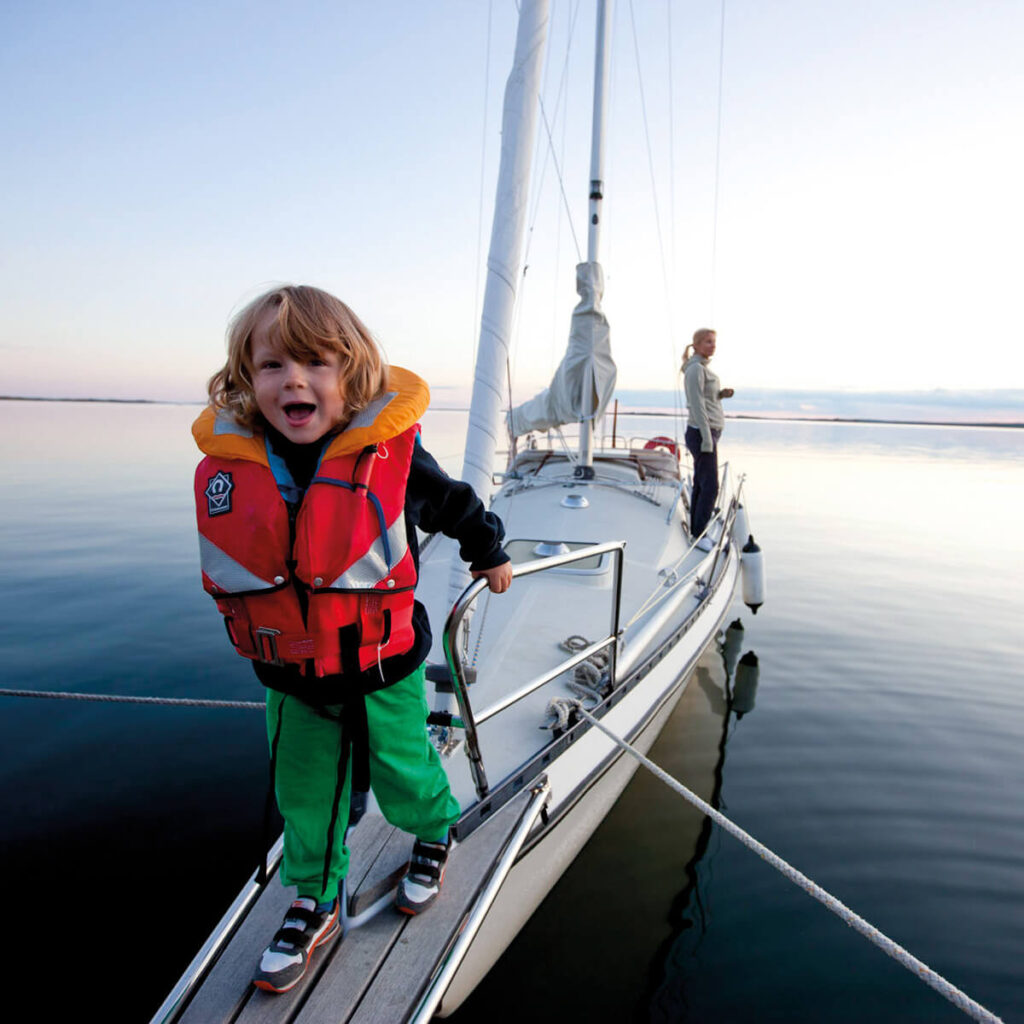guide
Anchor in bow platform
Anchoring is almost like a religion and what you choose is mostly driven by the forces affecting the boat and what grip you can achieve in the seabed where you plan or need to anchor. Some key variables are wind, waves, current, tide, seabed, boat type and size. We will not decide what anchor you should have even though we know a bit about it, but we know a lot about how to carry anchors in a bow platform and will hopefully guide you to the best solution for you and your boat.

Step-by-step Guide
1. Understand your anchor type
Anchors with a straight and heavy shank close to a 90-degree neck angle, typically Bruce and CQR anchors and their derivates, are normally not self-launching and are therefore best off with a pivoting anchor roller for easier launch and retrieval.
Anchor types with an angled or rounded profiled shank like Delta, Vulcan, Spade, Epsilon, Ultra-Marine, Rocna, Mantus, etc. to mention a few are made to set quickly and therefore self-launching.
Anchors with roll bars (like Rocna, Mantus and Bügel) fit well if positioned far forward in our Performance and Ultimate models where the roll bar lands ahead of the bowsprit. These modern anchors are also self-launching and in no need of a pivoting anchor roller.


2. Understand the relation between the bow and the bow platform
Normally, a standard bow roller is integrated into the hull and is not easy to remove. It makes therefore sense to keep it in combination with the new bowsprit. Due to the high number of bow designs, anchors and sizes, we have a smart solution for most combinations.
3. Want a ladder in the bow?
When mooring bow-to, a fixed bow ladder provides easy access from the bow, a common feature in Scandinavia. However, it’s important to ensure the ladder doesn’t interfere with your anchor. Please reach out to us to find a solution.

GUIDE
Anchor in sailing position
It is important to find a good stowage position for the anchor in the bowsprit where it can be fixed and remain stable during sailing.

Delta type anchor
An example of a plough anchor type, which is generally not very sensitive to different bowsprit installations. We recommend using the PB11 bow roller, as it performs well in most situations.

Rocna type anchor
A Rocna anchor is generally not very sensitive to different bowsprit installations, but it should be positioned further forward on the bowsprit. It can also present some challenges when combined with a bow ladder. We recommend using the PB11 bow roller, which performs well in most situations.

Vulcan type anchor
The Vulcan anchor can be somewhat sensitive to larger S measurements, causing it to rotate forward around its pivot point and hang down slightly. To minimize the impact of the S measurement, try using a pivoting roller P1308 mounted upside down and install the bowsprit as high as possible.

Bruce type anchor
A Bruce anchor is typically a very stable bowsprit anchor, thanks to its straight shank. However, the sharp neck can sometimes get caught in the forward part of the anchor case. To facilitate easier release, we recommend using the pivoting anchor roller model P1301 for anchors up to 15 kg. This design moves the pivot point closer to the anchor’s center of gravity, improving performance.

Guides
Want to learn more?
We help you choose the right gear for your boat.

Choose bowsprit for a sailing yacht
A bowsprit not only enhances the look and quality of your boat. It also helps you achieve a better boating experience. Make sure the type you choose covers both present and future needs.

Choose bowsprit for Code-0
Which bowsprit to choose depends on the load of the Code-0 and the weight of the bow anchor, if you have one. Here you can read more to easier choose between our models.

Choose the right ladder
A ladder on a boat provides both comfort and safety – choose one that meets all your needs. Our step-by-step guide gives you tips and advice on how to think when it comes to style, position, and features.